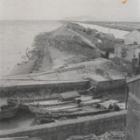Fairhead, James, and Melissa Leach. “Reading Forest History Backwards: Guinea’s Forest-Savanna Mosaic, 1893–1993.” Environment and History 1, no. 1 (Feb., 1995): 55–91. doi:10.3197/096734095779522708. Sophisticated local agricultural and forest management techniques have underlain the creation and maintenance of the main landscape features in Kissidougou Prefecture of Guinea’s forest-savanna transition zone. Social anthropological, oral historical, archival, and aerial photographic evidence shows how, over long periods, peri-village forest islands have been created from savannas, productive rice swamps from inland valleys, and productive upland soil and vegetation conditions from unimproved herbaceous savanna. From 1893, colonial policy was based on reading the region’s environmental history backwards, assuming forest islands to be relics of a once-extensive dense humid forest cover, which local agriculture and fire-setting had destroyed. Archival evidence shows how the deductions of botanists, agronomists, and foresters, coupled with the assumptions of administrators and other visitors, mutually reinforced each other to create and sustain a vision of degradation so pervasive that it still underlies modern environmental policy. The paper examines how colonial and post-colonial policies conceived within this vision have interacted with local land use. Given varying administrative capabilities, it considers the extent to which changes in local practices have been conditioned by policy as opposed to other social, economic, political, or ecological changes and the extent to which environmental changes have fortuitously coincided with policy objectives. All rights reserved. © 1995 The White Horse Press
"Reading Forest History Backwards: Guinea's Forest-Savanna Mosaic, 1893–1993"
Fairhead, James, and Melissa Leach | from Multimedia Library Collection:
Environment and History (journal)


